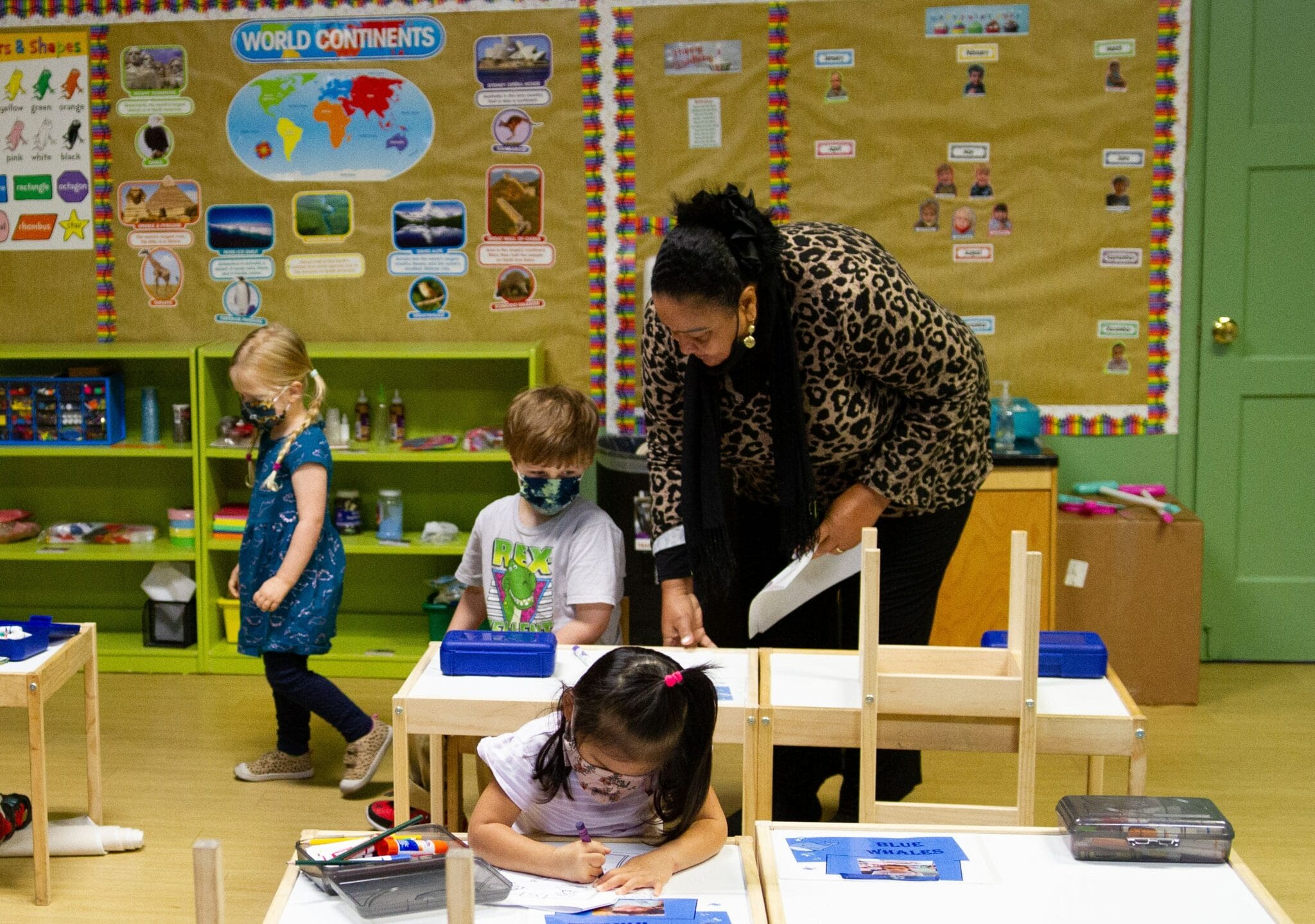May 1, 1992 marked the first Worthy Wage Day, kicking off a movement that had been decades in the making. On that May day, CSCCE Founding Director Marcy Whitebook joined other early educators in marches and rallies held across the country, calling for greater public investment to improve pay and working conditions. As we mark what is now Worthy Wage Week, CSCCE is joining early educators across the country to highlight their voices and to issue a clarion call for just compensation.
I have had the absolute pleasure of serving in the field of early care and education for more than 25 years. I have served every age group from infants to school-agers and held just about every position from bus driver to administrator. There is no greater joy than working with children. Walking into a classroom and being greeted like it’s the first time they have seen you, even if they just saw you an hour ago, is absolutely priceless. It gives me hope that if we leave anything for them to work with, our children will make this world a better place.
Children are resilient, much more so than adults. However, resiliency is not an innate characteristic; it’s learned, and students gain this adaptability when they form safe, stable, and trusting relationships with caring adults. Where are those relationships formed? In the very place young children spend the vast majority of their waking hours: early care and education programs. It is imperative to understand that there is more to our profession than many recognize, for we do more than teach, we build.
The first 2,000 days of a child’s life are essential for establishing a solid foundation that directly affects all future development. Early educators strategically create high-quality learning environments with experiences that stimulate brain development and ensure those synapses are firing and making neural connections critical to development. This is what we do. We work diligently to not waste a single one of those first 2,000 days.
Yet, despite our efforts and the critical services we deliver, we serve in a profession that is overlooked and underpaid. After decades of working tirelessly in the trenches without recognition, it took a pandemic to deem our workforce essential. While states were having open discussions about closing K-12 classrooms, surveying teachers and parents to gauge their thoughts and feelings about the matter, COVID-19 shed a light on the fact that early educators are indeed the workforce behind the workforce. Without our essential services, parents could neither remain in nor return to the workforce. However, no one surveyed the child care practitioners to garner our thoughts on staying open. Yet here we are: a low-wage, uninsured (or substantially underinsured) workforce comprised primarily of Black and Brown women, showing up every day, exposing ourselves to a pandemic that is killing us at a disproportionate rate.
Some policymakers have the audacity to question why America’s fragile child care system is on the brink of collapse under the weight of the coronavirus. Those of us within the system know all too well why it has been collapsing and why that was the case even before the pandemic: low wages, lack of benefits, and lack of respect for the profession causes high turnover. Many early educators work multiple jobs or receive public assistance, and they still barely make ends meet. It’s no wonder the profession is not a viable option.
I am a huge proponent for educating and professionalizing our workforce. Both go hand in hand with providing high-quality learning environments. I encourage all of my educators to pursue advanced degrees. Yet, like many other programs across the nation, once teachers obtain those degrees, they quite often (and understandably) leave my center for the public school system.
I had a teacher who came to me with a high school diploma. I mentored her for more than eight years and taught her everything that I know. She became an amazingly gifted teacher, received her associate degree, and worked in our state-funded classroom for years. Then she received her bachelor’s degree in December, and by January, she was the Child Development teacher at the local high school.
Within a year of taking a position with the public school system, she went from Section Eight housing, food stamps, and subsidized child care to purchasing her own home, getting married, and having a new baby. It is a tragic loss for our profession. Pre-K was her gift. She’d be the first to say she’s a better early educator than a high school professional, but she had to make the decision that was best for her family.
So what’s most important to remember is this: brains are not born, they are built, and the builders are your early education workforce. We are doing the heavy lifting, supporting the current workforce, assisting with a return to the workforce, and building the future workforce. We are establishing strong foundations. Therefore, legislatures must fund the field because early education nets the greatest return on investment. If you fail to bolster the builders, the ones securing the foundation, then this entire house of cards will collapse. And as we are witnessing now, early education programs are collapsing.
About the Author
Davina Boldin-Woods is the Director of Excel Christian Academy in Burlington, North Carolina.


